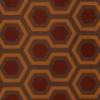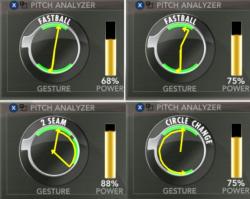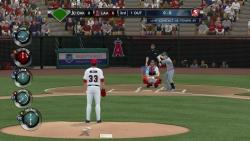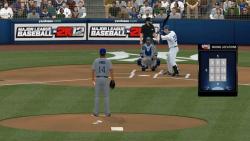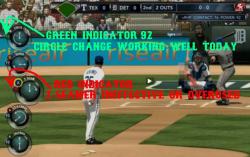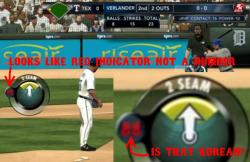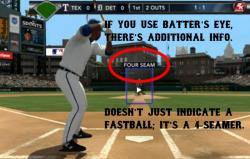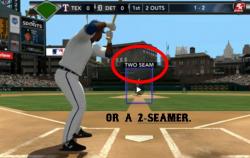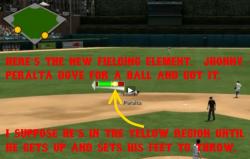-
Posts
146 -
Joined
-
Last visited
-
Days Won
5
Content Type
Profiles
Forums
Downloads
Everything posted by Qbrick808
-
http://www.youtube.com/user/2KSports
-
Jayson Stark ESPN.com With a negotiating deadline just days away, it now appears "likely" that Major League Baseball and the players' association will reach an agreement to expand the playoffs to 10 teams starting this season, sources familiar with the discussions have told ESPN.com. According to the terms of baseball's new labor deal, the two sides are required to reach an agreement before Thursday or postpone playoff expansion until 2013. However, discussions to resolve numerous scheduling issues have "intensified" in recent days, said one source. Multiple sources have declined to reveal any details of the talks, but the sides have made enough progress that one source said, "The feeling is now that it's likely that something is going to get done." Despite commissioner Bud Selig's unabashed push for expanding the playoff field this year, baseball's schedule-makers have been hung up for weeks about how to make expansion work for this season. With the regular-season schedule already in place, they are faced with the challenge of trying to squeeze two one-game, wild-card playoffs, the Division Series and the League Championship Series -- along with potential tiebreaker games and weather postponements -- into a tight three-week window between the end of the season Oct. 3 and the start of the World Series on Oct. 24. Those issues will not be a problem in 2013, when the regular-season schedule can be set up to accommodate the larger postseason field. The difficulty with implementing it this year was that negotiations did not begin until after the regular-season schedule already had been finalized. Under the terms of the labor agreement, there would be two wild-card teams in each league instead of one. And, in order to place more value on finishing first, the two wild cards would play each other right after the season in a one-game, win-or-go-home game. The winner then would advance to play in the Division Series. As recently as last week, sources were suggesting the two sides hadn't been able to agree on any acceptable postseason-schedule format. However, the increased pace of the discussions since then are a sign that a solution is in sight. The biggest problem the scheduling experts have faced is trying to fit the best-of-five Division Series into just a six-day window, so the League Championship Series can begin Saturday, Oct. 13. That would mean eliminating at least one travel day in the Division Series, a development that could lead to major travel and game-time issues. One source said the two sides are still talking because the deal is still "not done," and not all details have been ironed out. But sources are expressing optimism that all of the remaining obstacles can be overcome in time to implement the new playoff format for this year.
-
I was wondering if any of you have had experience with various brands of Xbox 360 type game controllers for the PC. I had been using the Logitech F510 Rumble Gamepad for a while, and what Iâm about to describe was never an issue with that. Currently I am enjoying the wireless freedom of a Microsoft Xbox 360 Controller for Windows. However, I have noticed that the analog sticks on this Microsoft model seem to be significantly less consistent or stable when it comes to the precision of pitching in MLB 2K. Iâm curious if anyone can confirm or comment on whether the different models have differing reputations for subtle issues such as this (or perhaps the specific unit I got could be slightly defective). I went through the calibration process several times and I even tried to compensate for the way the right stick seems to lean on the pitch gesture display, but those attempts were not successful enough to make things right given the strict accuracy required for the pitching motion in this particular game. Iâm attaching an image of a few screenshots of the Pitch Analyzer. These are examples of pitches that I absolutely know I threw perfectly straight, yet as you can see, the upward motion consistently leans to the right. There have even been instances when while throwing a simple fastball I have been charged with a wild pitch because the stick moved just outside of the allowed region (not really, but the computer is interpreting it that way). So, does anyone know if the Microsoft Xbox 360 controllers for Windows are known to have less stability with the analog stick up/down motion than other brands? Is there perhaps some way to fix or adjust this (through the Windows calibration process or otherwise) that Iâm just not aware of? Any thoughts, suggestions or ideas? I still have a period of time where I can exchange or return this Microsoft controller, but I really prefer every other aspect of its design over the Logitech models (including their wireless F710), so Iâm hoping someone can help me make this one work the way I need it to (or at least confirm that it simply cannot). Thanks for any info on the subject.
-
Some additional images show that it is more than just the pitch rating number which will be visually affected by the change to pitching in 2K12. The entire circle where the stick motion of the pitch is shown will vary from green to yellow to red. Also, take a look at an image of a new chart feature (called up anytime using the left button on the D-Pad) which displays how your pitcher is mixing locations with his pitches within the current game. OTHER INFO WHICH MANY WILL FIND INTERESTING: Warnings and ejections by the umpires have been added to MLB 2K12 for hitting batters. Umpires will issue warnings to each dugout just like in MLB, and anyone who hits a batter after the warning has been issued will be ejected from the game. There will NOT be access to check if pitchers in the bullpen are warmed up (in the past you could use the pause menu or the D-pad). When a pitcher is fully warmed up, the game will notify you automatically (I'm not so sure about the point of this since real-world managers can have unlimited contact with their bullpen coaches, but I really don't see this being a huge factor anyway). The overuse of a pitch leading to ineffectiveness within the current game will start out as a function of the pitcher's tendency; the success or failure by the opposition will only come into play later and possibly only when it's quite significant. This means that a pitcher who is expected to throw 65% fastballs will not get those yellow warnings and red scares just because he's using the heater two-thirds of the time, and Mariano Rivera will not be penalized for using his Cutter 87% of the time. It seems that the yellow indication in a pitch circle is the game's way of giving you a head's up that your current pace with that pitch is more than just a little above the tendency percentage found in the pitcher's profile. The yellow indicator does not mean that you will be penalized; it is simply letting you know that you're headed towards the red if you don't adjust. If you do adjust to the new color coded system, your red pitches will fall back to yellow and then green, and pitches which only got to the yellow can return to green quite quickly.
-
SUGGESTIONS AND IDEAS WHERE FEASABLE: For the Batter’s Eye Rating, factor in Pitches Seen per AB, Balls/Strikes seen ratio and the Plate Discipline stats from fangraphs. The Plate Discipline section includes the following: O-Swing%: Percentage of pitches a batter swings at outside the strike zone. Z-Swing%: Percentage of pitches a batter swings at inside the strike zone. Swing%: Overall percentage of pitches a batter swings at. O-Contact%: Percentage of pitches a batter makes contact with outside the strike zone when swinging the bat. Z-Contact%: Percentage of pitches a batter makes contact with inside the strike zone when swinging the bat. Contact%: Overall percentage of a batter makes contact with when swinging the bat. Zone%: Overall percentage of pitches a batter sees inside the strike zone. F-Strike% – Percentage of first pitch strikes. SwStr%: Percentage of total pitches a batter swings and misses on. For the Bunting and Drag Bunting categories, look to fangraphs More Batted Ball section where they indicate how many Bunts and Bunt Hits a player had. Between that and Sac Bunts (SH), you might be able to come up with a formula factoring in success rate as well as frequency of attempts. Just to show how pronounced this can be, over the last ten seasons Juan Pierre has averaged 13 Sac Bunts, 20 Bunt Hits and 57 Bunts per season. During that same decade, Albert Pujols has a grand total of zero Sac Bunts, 2 Bunt Hits and 4 Bunts. Clearly, frequency needs to play a key role in these figures because guys who can’t bunt won’t be allowed to do so at a high rate like Juan Pierre, yet a guy like Pujols could be a great bunter, but he is simply not asked to use that skill very often. Then take a guy in the middle like Derek Jeter; during the same decade, his averages per season are 7 Sac Bunts, 4 Bunt Hits and 11 Bunts. The Awareness category for base running is certainly difficult. The Speed Score (spd at fangraphs) takes into consideration Stolen Base Percentage, Frequency of Stolen Base Attempts, Percentage of Triples and Runs Scored Percentage. I think another number which would provide at least a little bit of relevant info if included with additional data would be Runs Scored minus Home Runs. Fielding Range can make use of the Range Factor stat (RF). The equation is: ((Putouts + Assists) * 9) / Defensive Innings Played For Catchers Blocking Pitches, you could determine the average number of Passed Balls throughout MLB per 9 innings caught, and compare the individual catcher’s number of Passed Balls to that with a bell curve scale running plus to minus. Catchers’ Game Calling brings up a very controversial choice for you to make. The only real way to use the stats is to base everything on the performance of the pitchers while the given catcher is in the game. Of course, many people will argue that a catcher who is mediocre at game calling will have an extremely inaccurate rating if his pitching staff is full of elite arms. For Pitchers’ Control per each pitch type, fangraphs identifies the percentage of strikes in parenthesis, so looking at Roy Oswalt’s 2011 numbers, he threw 10.5% Sliders, 84.2% of which were strikes, and he used the Curveball 9.8% of the time with 70.8% of those pitches going for strikes, so coming up with a formula there shouldn't be extremely difficult. Pitchers’ Movement is much more difficult to evaluate from raw numbers, but one thing to consider using is the simple percentage of attempted swings which are missed by the hitters (SwStr%). You might also factor in the percentage of pitches in the strike zone which are not swung at. For Pitching Composure, batters Left on Base is certainly one good stat to include in a formula. A vital component in this category – for relievers – is the percentage of Inherited Runs allowed (IR). You could also consider including performance during Late Inning Pressure Situations for this one. If Pitching Stamina is to be truly accurate, you’d want to try and include a representation of the pitch count beyond a certain threshold (say, over 70 or 75 pitches) in games deemed close (likely three or fewer run margins). For Pitchers’ Pickoffs, in addition to the singular stat itself, you could include Stolen Base attempts against per 9 innings. Additionally, although it might be a little complex, you’d really want to include a base value of the catcher’s ability to throw out base stealers so to offset exaggerated figures attributable to runners taking advantage of a catcher’s liability as opposed to that of the pitcher. Fangraphs actually has a stat called Clutch, so that might be a good place to start there (it measures a player’s performance in high pressure situations to that same player’s overall performance). You could also make use of the Close and Late/Late Inning Pressure Situation stats.
-
It's still very minimal, but it is nice to finally be able to put a picture with some of the new features.
-
Hey Don-- Something worth pointing out which I read about the future of 2K and MLB. It's true that their exclusivity contract with the league expires after 2012 and they're not expected to have interest in renewing it unless the cost were to drop radically, but the most likely scenario is that no one else will jump in to grab that exclusive rights deal for the same reasons 2K is lacking interest. What you will probably see beginning in 2013 is a situation where no single entity owns an exclusive MLB rights package and therefore many companies, including 2K, will be able to produce baseball games the right way. Remember that the 2K exec who claimed they're not in the business to lose money (and that deal supposedly results in about a $40 million annual loss) never said anything about wanting to get out of the baseball game business. If no exclusivity deal is reached between MLB and some other party for 2013 (which is the best bet for where we're headed), there is absolutely no way that 2K will simply drop their baseball division; they have always expressed the desire to avoid becoming a basketball only operation (which is smart). We will have to see how things break, but don't be too quick to assume that 2012 is the end for MLB 2K and baseball on the PC.



